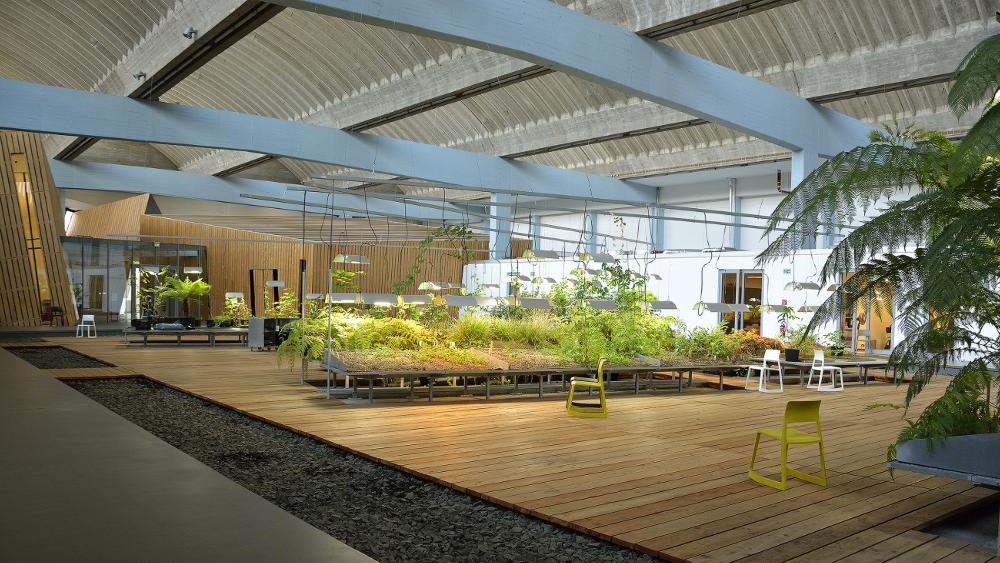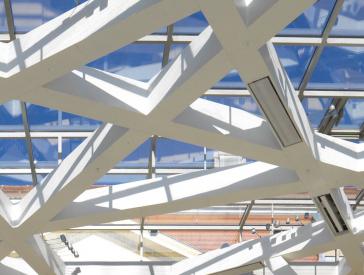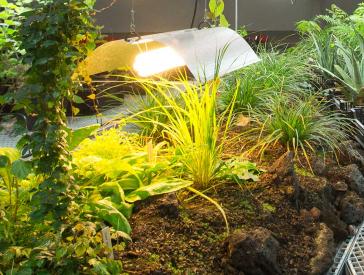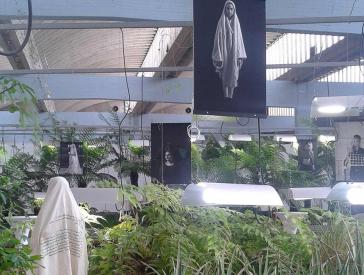
Diaspora Garden; JMB, photo: Ernst Fesseler
The Diaspora Garden
Breaking New Ground for Educational Programs at the W. Michael Blumenthal Academy
The Diaspora Garden is located in the W. Michael Blumenthal Academy’s inner courtyard and serves as a space for exchange and reflection as well as for learning and creating as part of the educational programs at the Jewish Museum Berlin. Designed by artists from the “atelier le balto” landscape architecture studio, the Diaspora Garden reflects aspects of life in the Diaspora.
The Academy’s current opening hours are listed on our Planning your Visit page.

Where
W. M. Blumenthal Academy, Diaspora Garden
Fromet-und-Moses-Mendelssohn-Platz 1, 10969 Berlin
(Opposite the Museum)
Themed Plateaus
In the middle of the garden area are four steel “plateaus,” or planting beds, that seem to float in the air, each with an area of roughly 4 x 14 meters surrounded by a wooden platform. The plateaus can be arranged and used in a variety of ways. Each one is planted according to a different theme: landscape, culture and soil, and nature and humanity. The fourth plateau, titled “Academy,” serves as a testing ground for the participants in educational programs and features not only maps, drawings, and photos, but also soil, seeds, and pots for planting. The plateaus demonstrate different degrees of variability and thus present ever new aspects and emphases in the garden.
The Diaspora Garden

The Diaspora Garden is located in the W. Michael Blumenthal Academy’s inner courtyard between the office wings and the wooden cubes of the entryway, photo: Valeska Wolfgram
Diverse Plants
A wide variety of plants can be found on the four plateaus: those with a special connection to Jewish life or Jewish personalities; plants in various stages of development that show such processes as seeding, rooting, growing, and wilting; plants that are themselves in the throes of or have completed a “diaspora” process in the sense of dispersion; and lastly, those chosen by participants of our educational programs.
Our Buildings: Daniel Libeskind and the Baroque Era (6)














